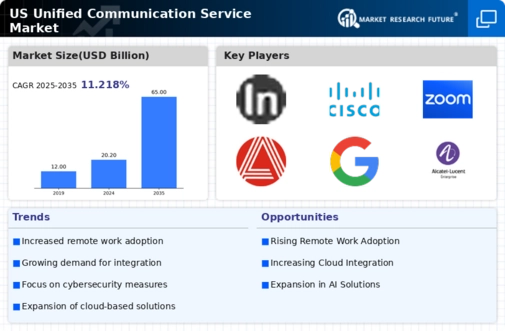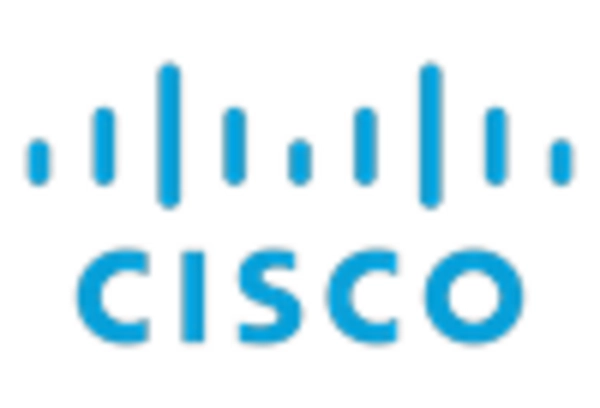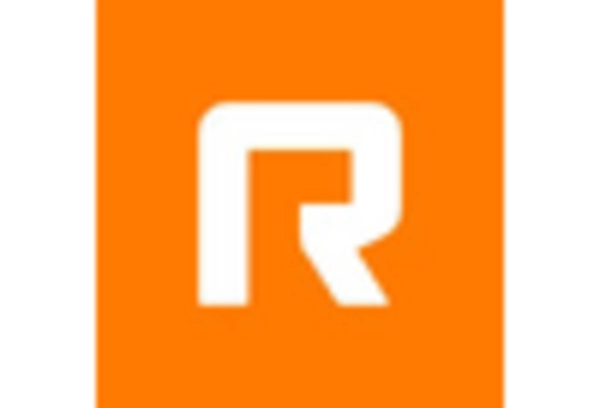The unified communication-service market in the US is characterized by a dynamic competitive landscape, driven by rapid technological advancements and evolving customer demands. Major players such as Microsoft (US), Cisco (US), and Zoom (US) are at the forefront, each adopting distinct strategies to enhance their market positioning. Microsoft (US) emphasizes innovation through its integration of AI capabilities into its Teams platform, aiming to streamline collaboration and improve user experience. Cisco (US), on the other hand, focuses on strategic partnerships, enhancing its Webex offerings to cater to hybrid work environments. Zoom (US) continues to expand its service portfolio, integrating advanced security features to address growing concerns over data privacy, thereby reinforcing its competitive edge.
The business tactics employed by these companies reflect a moderately fragmented market structure, where localized strategies and supply chain optimization play crucial roles. Companies are increasingly localizing their services to meet regional demands, which enhances customer satisfaction and loyalty. The collective influence of these key players shapes a competitive environment that is both challenging and opportunistic, as they vie for market share through differentiated offerings and customer-centric approaches.
In October 2025, Microsoft (US) announced a significant upgrade to its Teams platform, incorporating advanced AI-driven analytics to enhance user engagement and productivity. This strategic move is likely to solidify Microsoft’s position as a leader in the unified communication-service market, as it aligns with the growing trend of leveraging AI to optimize business processes. The integration of these analytics tools may provide organizations with actionable insights, thereby fostering a more efficient communication ecosystem.
In September 2025, Cisco (US) unveiled a new partnership with a leading cybersecurity firm to bolster the security features of its Webex platform. This collaboration is strategically important as it addresses the increasing demand for secure communication solutions in a landscape where data breaches are prevalent. By enhancing its security protocols, Cisco (US) not only protects its users but also positions itself as a trusted provider in the unified communication-service market, potentially attracting new clients concerned about data integrity.
In August 2025, Zoom (US) launched a new initiative aimed at integrating its services with various third-party applications, enhancing interoperability for users. This strategic action is indicative of Zoom's commitment to creating a more versatile communication platform, which may appeal to businesses seeking seamless integration across different tools. By fostering an ecosystem of interconnected applications, Zoom (US) could enhance user retention and attract a broader customer base.
As of November 2025, the competitive trends within the unified communication-service market are increasingly defined by digitalization, sustainability, and AI integration. Strategic alliances are becoming pivotal, as companies recognize the value of collaboration in enhancing service offerings and expanding market reach. Looking ahead, competitive differentiation is likely to evolve from traditional price-based competition to a focus on innovation, technological advancements, and supply chain reliability. This shift suggests that companies will need to invest in cutting-edge technologies and sustainable practices to maintain their competitive edge in an ever-evolving market.

















Leave a Comment